LG Prada 3.0 Review
LG Prada 3.0
Is the latest Prada phone a catwalk-ready iPhone 4S-beater? We get to know this mobile supermodel.
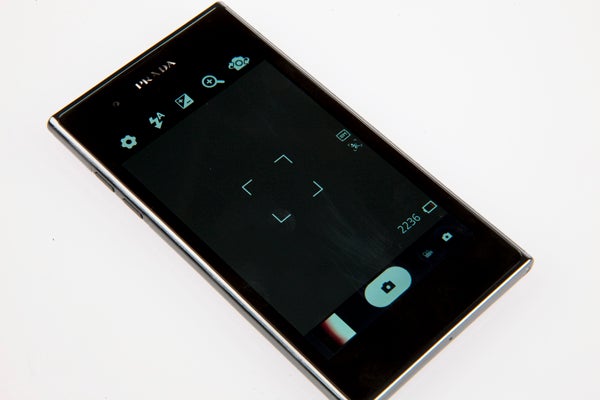
Verdict
Pros
- Slim, attractive design
- Good display
- Neat custom UI
- Good performance
- You pay ~£100 for the Prada bits
Cons
- Specs say it's 9 months late
- Low-res screen
Key Specifications
- Review Price: £429.99
- 1GHz Dual-core TI OMAP CPU
- 8GB internal memory
- Android 2.3 Gingerbread OS
- 4.3in IPS screen
- 480 x 800 pixel resolution
Although the LG Prada 3.0 is a fashion phone, it’s priced to compete with other high-end Android phones. At around £430 SIM-free, it’s a similar price to the staggeringly popular Samsung Galaxy S2, and almost £100 cheaper than the iPhone 4S 16GB. Not what you’d expect from a fancy brand like Prada?
Watch our full video review of the LG Prada 3.0:
The reasonable price is possible because the LG Prada phone doesn’t use ultra-high quality materials like those of luxury Vertu phones. It’s a fine-looking device, but it’s made largely of plastic and glass like most worryingly-thin Android phones.
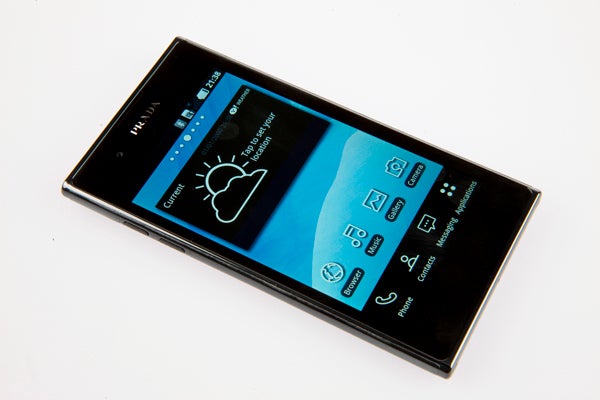
At 8.5mm thick, this phone has the dimensions to suit its fashion phone pretensions. It’s thinner than the HTC Sensation XE and the same thickness as Samsung Galaxy S2.
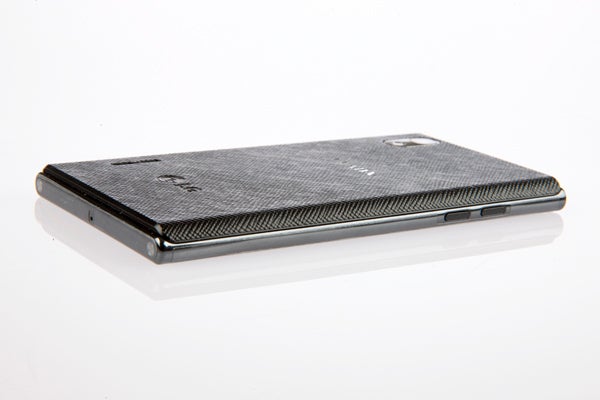
Its look is starker and bolder than the Samsung trooper, though. Turned off, there are no buttons to be seen on its front and no superfluous icons – just the Prada logo, a user-facing camera and the ultra-discreet earpiece speaker grill. It looks the business. There are bright, LED-lit touch sensitive buttons down at the bottom, but they only show up momentarily following a press on the touchscreen.
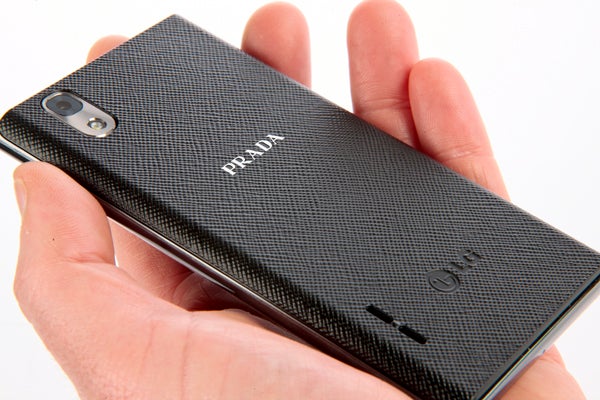
The classy look continues on the LG Prada 3.0’s back and sides. Its edges are finished in smoky chrome and the back is embossed with an uneven dimpled texture that wouldn’t look out of place on a Prada handbag.
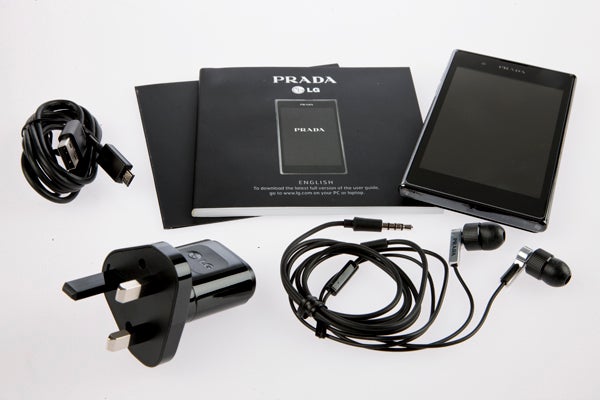
The accessories package includes “funky-looking” earphones
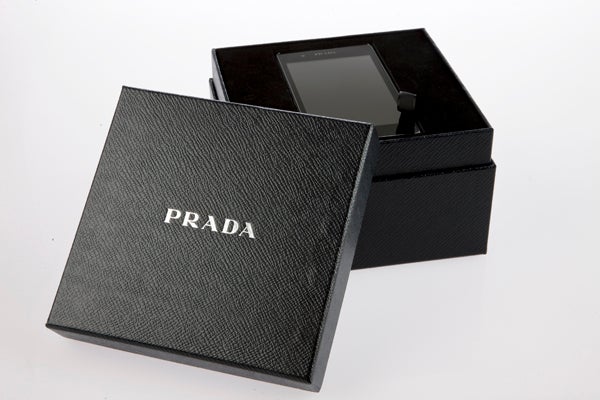
The Prada phone knows how to make an entrance
Other design highlights includes the connections and buttons on the phone’s top edge. There are buttons for power on/off and the camera shutter, and a similarly-styled slider atop the microUSB charge/data transfer slot. None of them are labelled, but like the transient touch buttons, the consistent look is classy. Each is a round metal blip finished with subtly-raised concentric circles. The other edges are free of connections, leaving just the volume control buttons on the left side.
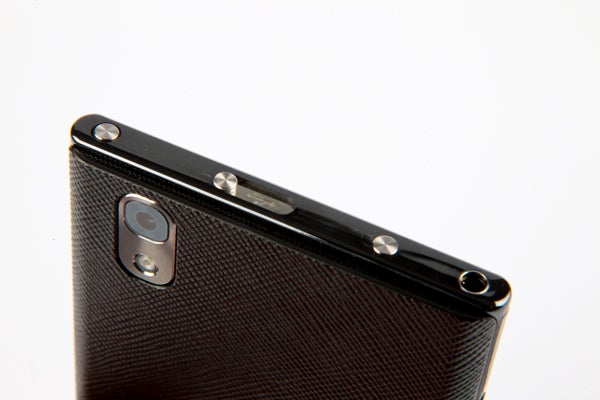
If you’re expecting a phone that feels like pure luxury, though, you may be a little disappointed with the feel of the plastic battery cover. Its high-friction surface adds plenty of grip, but misses out on the cool touch of metal or the soft touch of leather. However, given the somewhat-reasonable price the phone sells at, expecting real leather is perhaps to expect too much.
From a more technical perspective, the LG Prada 3.0’s bod is fairly up-to-date. The microUSB port is MHL-compatible, letting it output HD video and surround sound given the right cable, and there’s a microSD card slot behind the battery cover. With top-end Android phones increasingly omitting this feature, this is good to see. However, the 8GB of internal storage is less impressive, with many phones at the price supplying 16GB.
The LG Prada 3.0 phone runs Android 2.3 Gingerbread. This is starting to look a little old-hat now that a huge wave of 4.0 Ice Cream Sandwich mobiles is on the way, but LG has given it a Prada-style makeover that gives it a distinct identity.
Although the phone does have a full-colour screen the custom look is black and white. It ships with a black wallpaper, a brace of stark-looking monochrome widgets comes pre-installed and all the core phone features bar Google-branded ones have their own neat black and white icons.
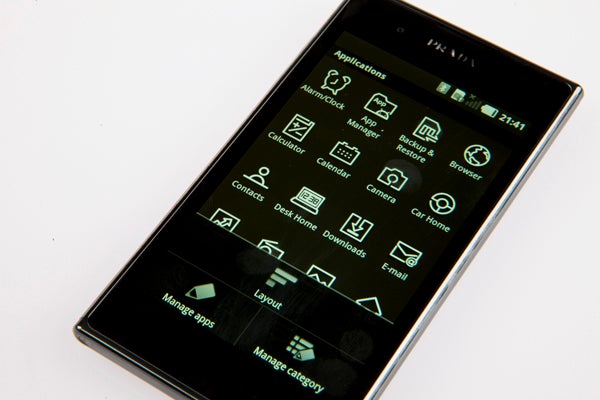
If you like this look, the LG Prada 3.0 also comes with dozens of additional icons that can be used to replace other apps’ icons within a couple of screen taps. These only work on the home screens, not the full apps menu, but let you build-up a full custom home screen without ruining the Prada phone aesthetic.
The great things about this custom user interface include that it doesn’t appear to slow the phone down – navigation is lag-free 99 percent of the time – and it knows its boundaries. It’s all about the look and nothing else, and doesn’t try to fiddle with how your home screens are arranged or how the phone functions much.
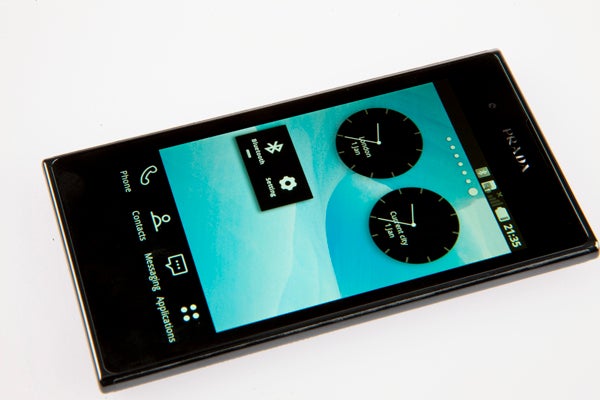
The LG Prada 3.0 does feature a raft of preinstalled apps not seen in all Android phones, and only a couple feel like unnecessary bloatware. Polaris Office lets you open Microsoft Office documents, Desk Home turns the phone into a desk clock, VPN, NFC and DLNA SmartShare interfaces come pre-installed, as do basic Yahoo! Finance, Weather and News apps.
LG could have let these be optional Android Market extras, but it clearly wanted to make the most of its treasure trove of app icons – which buyers won’t necessarily twig are there to be used. The only app we would rather not have seen is LG SmartWorld, a ringtones and apps shop. Who needs it when we have the Android Market?
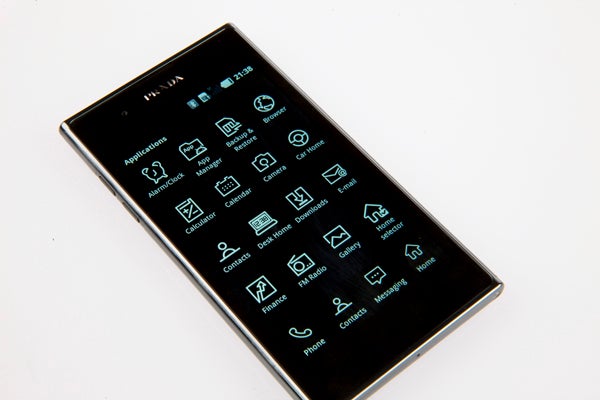
The conspicuous and surprising omissions are apps for social networks, which would likely be used by most Prada-obsessed buyers. However, there is a widget that caters for Facebook and Twitter, and does the trick for quick updates. Keener mobile social networkers can easily download official and third-party apps from the Android Market, which are often superior to phone makers’ efforts anyway.
After Android and the Prada extras have had their way with the 8GB of internal memory, you’re left with 3.99GB of internal memory. It’s enough to get started, but is much less than you get with a 16GB Samsung Galaxy S2. However, when 16GB microSD cards are available for around £15, it’s a problem with an easy solution.
The LG Prada 3.0 has a 4.3in screen using an IPS LCD display – the same type seen in many top-end phones including the iPhone 4S. Basic display quality is very good, a notch above many SLCD phones including the HTC Sensation XE – where the backlight becomes a little too visible when the screen’s turned to one side.
Contrast and black levels aren’t quite as good as an AMOLED screen, but there’s none of the colour oversaturation often seen in that type of screen. The perfect type of screen for a phone hasn’t been found yet, but IPS displays like this are among the very best.
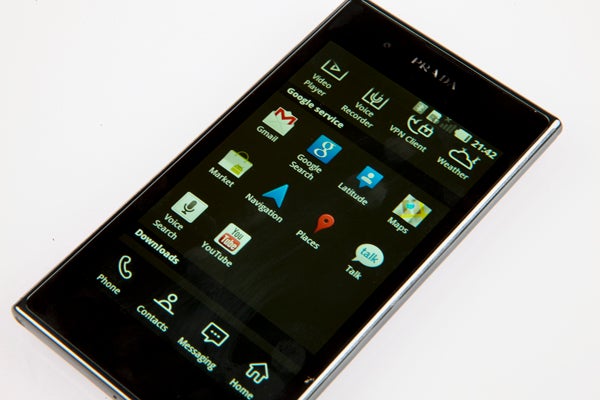
Look! The screen even does colour
However, a closer look at the Prada phone’s screen makes it seem a little behind the times. It uses a 480 x 800 pixel resolution, giving it a far less pixel density than an iPhone 4S or Samsung Galaxy Nexus. The screen resolution here is two generations behind the top phones of today – 540 x 960 has been about for around a year and as the MWC 2012 mobile phones show demonstrated, 1280 x 720 (720p) phone screens will become commonplace in 2012.
When flicking about the interface, you won’t notice this lower pixel density – unlike the Nokia Lumia 800 the pixel structure isn’t too apparent – but small text looks quite fuzzy in the browser, making browsing on-the-go slightly compromised. Playing back video suffers less from the limited screen resolution – it looks great – and codec support is way above average.
The LG Prada 3.0 will play most common formats including DivX, Xvid and MP4, and sailed through 720p vids with ease. However, it refused to play 1080p MKV files, which are popular with online movie hounds.
The inbuilt music player is rudimentary rather than a fancy Prada-style alternative, but is very easy to use and will add any tracks plonked onto the internal memory automatically. Output from the 3.5mm jack is clean – some gadgets have hissy jacks – and fairly loud. Again, many phones make you crank the volume right up to get a decent listening experience. You’ll need to invest in a large memory card to turn the LG Prada 3.0 into a great music player, but it has the rest sorted out.
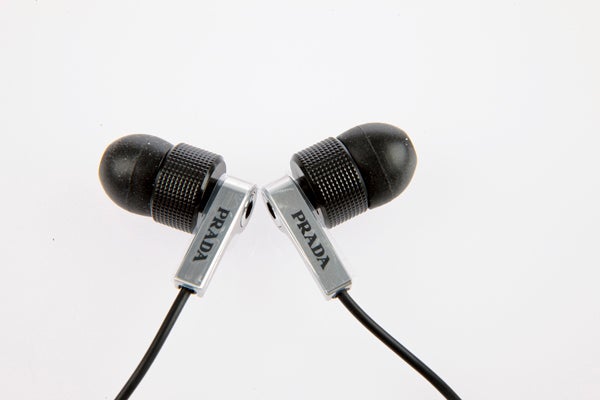
What would Gok say? Honestly, we’re not sure.
There’s also an FM radio, which uses the headphone cable as an antenna. Like the music player, it’s an Android standard rather than a glossy Prada version and doesn’t allow recording from the tuner.
Get yourself a data-heavy contract and you can use something like Spotify or an internet radio app too – like all top-end phones the Prada phone has high-speed HSPA mobile internet and Wi-Fi. The web browser is the default Android version, and there is plenty of support for additional features including Adobe Flash, tabbed browsing and bookmarks. This being Android, you can easily swap the browser for another, such as Google’s own Chrome.
The browsing experience is excellent aside from the minor limitations of the 480 x 800 pixel screen. Touchscreen responsiveness is great, the phone is fast to render websites and the large screen makes typing website addresses using the virtual keyboard quick and accurate.
On the LG Prada phone’s rear is an 8-megapixel camera shacked-up with a single-LED flash. In good light, the camera produces sharp, detailed photos that can compete with a decent compact camera.

It copes reasonably well with poorer light conditions too. As our standard test image below shows, while the gherkin is indistinct through the fog, the LG Prada 3.0 camera’s processing doesn’t strain too hard to sharpen-up details. It will focus on anything around 15cm away or further, and supports touch-to-focus as well as continuous focus – where the sensor refocuses constantly – and standard autofocus.
Macro-style detail is possible with this camera – as long as you have enough light to work with. However, the flash isn’t massively powerful and at night any subjects will have to be fairly close-by.
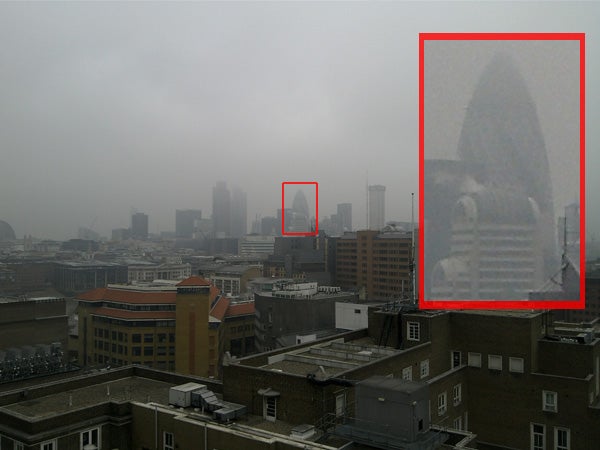
Sometimes London looks beautiful. And sometimes it looks like this.

An unusually-placed physical camera button sits on the top of the phone. This defaults to the user-facing 1.3-megapixel snapper rather than the main one, telling you that it’s for Photobooth-style action rather than for nature photography. It does work with the main camera as well, however.
The software that drives the camera is a quite limited. You have access to basic white balance settings, scene modes and ISO, but there are none of the fun effects seen in the Samsung Galaxy Nexus and other phones. These can be supplied by a camera app from the Android Market, but the best of these are paid-for.
The LG Prada 3.0 can capture video at up to 1080p resolution, but again it’s a little limited. There’s no re-focusing options during shooting, and if you close in on an object in a video, the camera won’t do the job itself. Result? Blur city. It’s possible continuous video focus will be added with the planned Ice Cream Sandwich software update, though.
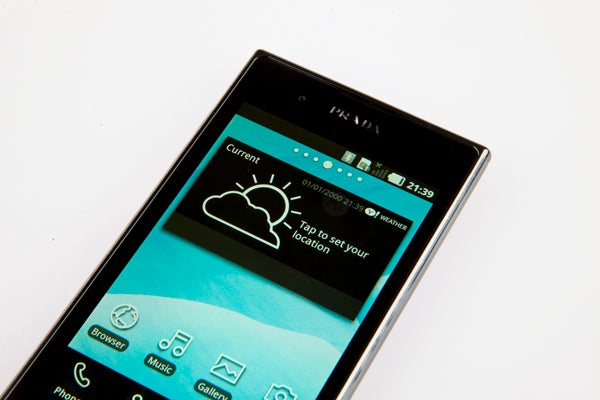
Call quality is up there will the best top-end phones. The speaker is clear and the LG Prada 3.0 uses active noise cancellation. This uses a second microphone to monitor ambient noise and remove it from the call signal before it reaches whoever you’re talking to.
Battery life is nothing special. A clear case of style over substance, the slim phone uses a 1500mAh battery – many rivals have a little more juice. The Samsung Galaxy S2 uses a 1650mAh unit and the HTC Sensation XE a 1730mAh number. That said, it’ll last a full day with 3G enabled, frequent email checks and a spot of Angry Bird’ing. Just don’t expect much more.
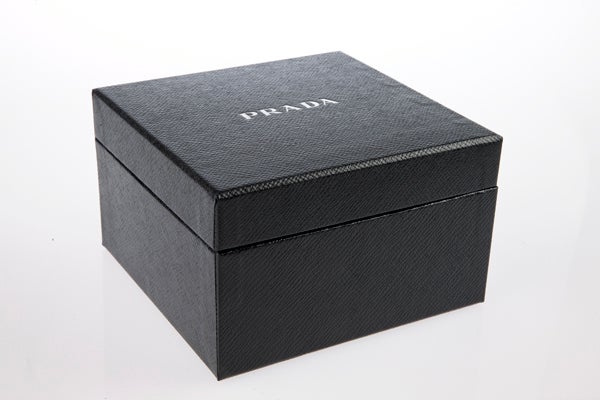
The LG Prada 3.0 makes very few outright wrong moves. It looks good, uses quality components, and its Prada elements are inoffensive at their worst, and rather neat in places too. However, its specs are in-line with phones a year old rather than those of today. Mobiles like the Sony Ericsson Xperia Arc S and original HTC Sensation offer a similar – and in places better – mobile experience for £100 less. The Prada phone isn’t daylight robbery like some fashion phones, but you’re still paying a chunk of change for that name alone.
Verdict
The LG Prada 3.0 is the third Prada phone, and it’s a joy to use. Some of its features, like the relatively low-resolution screen and Android 2.3 software, feel a little old hat, but the snazzy custom interface, good performance and decent display make up for these complaints. If you don’t care about the name or the slick look, you can save £100 and buy an HTC Sensation or Sony Ericsson Xperia Arc S, but if you love the look, this is a highly competent smartphone.
How we test phones
We test every mobile phone we review thoroughly. We use industry standard tests to compare features properly and we use the phone as our main device over the review period. We’ll always tell you what we find and we never, ever, accept money to review a product.
Trusted Score
Score in detail
-
Performance 8
-
Design 8
-
Value 7
-
Features 7
General
| Operating System | Android OS |
| Height (Millimeter) | 127.5mm |
| Width (Millimeter) | 69mm |
| Depth (Millimeter) | 8.5mm |
| Weight (Gram) | 138g |
Display
| Screen Size (inches) (Inch) | 4.3in |
| Screen Resolution | 480 x 800 |
| Touchscreen | Yes |
Battery
| Standby Time (Hour) | 330hr |
Storage
| Internal Storage (Gigabyte) | 8GB |
| Camera (Megapixel) | 8 Megapixel |
| Front Facing Camera (Megapixel) | 1.2 Megapixel |
| Camera Flash | Yes |
Connectivity
| Bluetooth | Yes |
| WiFi | Yes |
| 3G/4G | Yes |
| 3.5mm Headphone Jack | Yes |
| Charging/Computer Connection | Yes |
Processor and Internal Specs
| CPU | 1GHz dual-core |
Misc
| App Store | Yes |
| GPS | Yes |


